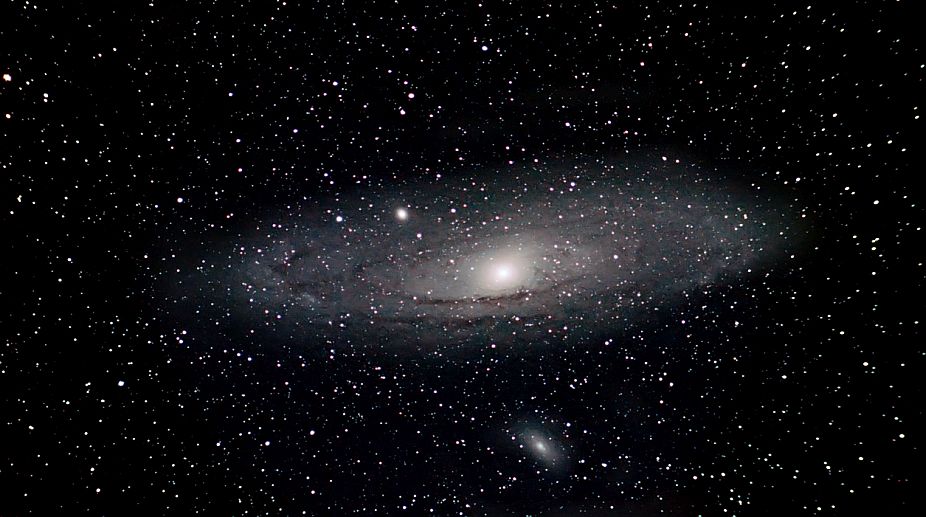Astronomers using NASA's Hubble Space Telescope have discovered a first-of-its-kind compact yet massive, disk-shaped 'dead' galaxy that stopped making stars just a few billion years after the Big Bang.
The discovery challenges the current understanding of how massive galaxies form and evolve, researchers said.
With the help of the Hubble telescope, researchers from the University of Copenhagen in Denmark photographed the galaxy and were able to see into the centre of the dead galaxy – where star formation has stopped.
Advertisement
They were expecting to see a chaotic ball of stars formed through galaxies merging together. Instead, they saw evidence that the stars were born in a pancake-shaped disk.
This is the first direct observational evidence that at least some of the earliest so-called “dead” galaxies somehow evolve from a Milky Way-shaped disk into the giant elliptical galaxies we see today, researchers said.
This is a surprise because elliptical galaxies contain older stars, while spiral galaxies typically contain younger blue stars.
At least some of these early “dead” disk galaxies must have gone through major makeovers. They not only changed their structure, but also the motions of their stars to make a shape of an elliptical galaxy, the team said.
“This new insight may force us to rethink the whole cosmological context of how galaxies burn out early on and evolve into local elliptical-shaped galaxies,” said Sune Toft from University of Copenhagen.
“Perhaps we have been blind to the fact that early 'dead' galaxies could in fact be disks, simply because we haven't been able to resolve them,” Toft said.
The remote galaxy is three times as massive as the Milky Way but only half the size. Rotational velocity measurements showed that the disk galaxy is spinning more than twice as fast as the Milky Way.
Using data from the Cluster Lensing And Supernova survey with Hubble (CLASH), the team was able to determine the stellar mass, star-formation rate and the ages of the stars.
Why this galaxy stopped forming stars is still unknown, researchers said.
They speculate that it may be the result of an active galactic nucleus, where energy is gushing from a super massive black hole. This energy inhibits star formation by heating the gas or expelling it from the galaxy.
It may be the result of the cold gas streaming onto the galaxy being rapidly compressed and heated up, preventing it from cooling down into star-forming clouds in the galaxy's centre, researchers said.
The young, massive, compact disks evolve into the elliptical galaxies we see in the present-day universe 'probably through mergers', they said.
“If these galaxies grow through merging with minor companions, and these minor companions come in large numbers and from all sorts of different angles onto the galaxy, this would eventually randomise the orbits of stars in the galaxies,” Toft said.
“You could also imagine major mergers. This would definitely also destroy the ordered motion of the stars,” Toft added.
The research was published in the journal Nature.









